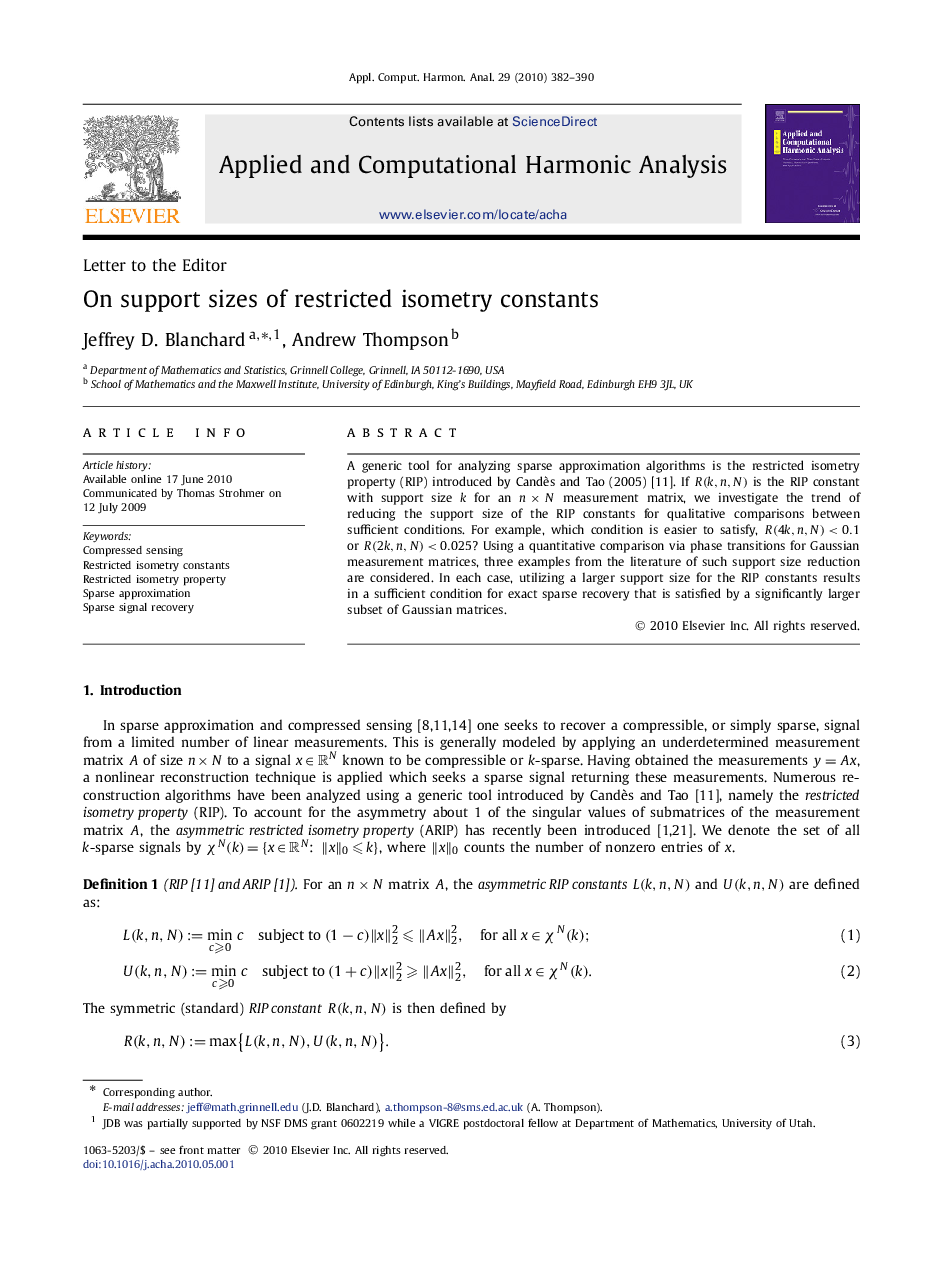| Article ID | Journal | Published Year | Pages | File Type |
|---|---|---|---|---|
| 4605457 | Applied and Computational Harmonic Analysis | 2010 | 9 Pages |
A generic tool for analyzing sparse approximation algorithms is the restricted isometry property (RIP) introduced by Candès and Tao (2005) [11]. If R(k,n,N) is the RIP constant with support size k for an n×N measurement matrix, we investigate the trend of reducing the support size of the RIP constants for qualitative comparisons between sufficient conditions. For example, which condition is easier to satisfy, R(4k,n,N)<0.1 or R(2k,n,N)<0.025? Using a quantitative comparison via phase transitions for Gaussian measurement matrices, three examples from the literature of such support size reduction are considered. In each case, utilizing a larger support size for the RIP constants results in a sufficient condition for exact sparse recovery that is satisfied by a significantly larger subset of Gaussian matrices.
